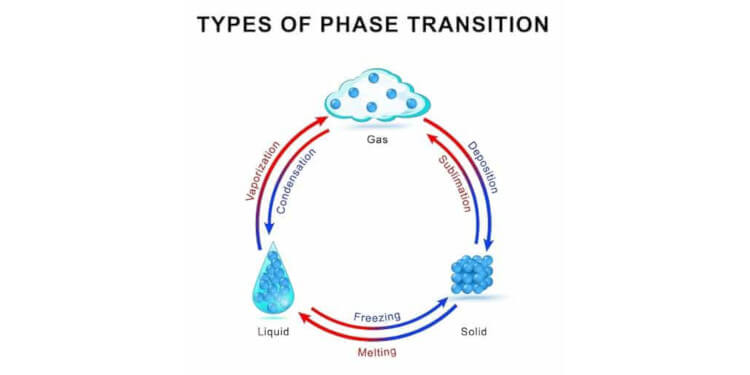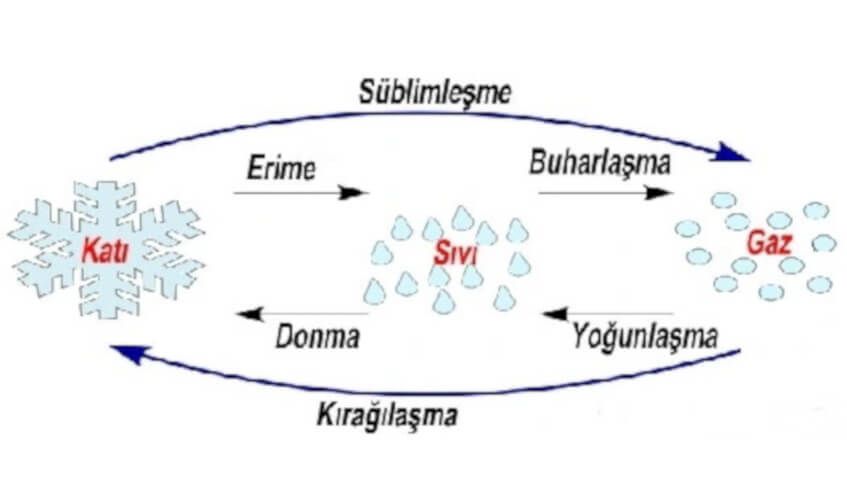Sublimation is the term for when matter undergoes a phase transition directly from a solid to gaseous form, or vapor, without passing through the more common liquid phase between the two. It is a specific case of vaporization. Sublimation refers to physical changes of transition, and not to cases where solids convert into gas due to a chemical reaction. Because the physical change from a solid into a gas requires the addition of energy into the substance, it is an example of an endothermic change.

How Sublimation Works
Phase transitions are dependent upon the temperature and pressure of the material in question. Under normal conditions, as generally described by kinetic theory, adding heat causes the atoms within a solid to gain energy and become less tightly bound to each other. Depending on the physical structure, this usually causes the solid to melt into liquid form.
If you look at the phase diagrams, which is a graph that depicts the states of matter for various pressures and volumes. The "triple point" on this diagram represents the minimum pressure for which the substance can take on the liquid phase. Below that pressure, when the temperature drops below the level of the solid phase, it transitions directly into the gas phase.
The consequence of this is that if the triple point is at high pressure, as in the case of solid carbon dioxide (or dry ice), then sublimation is actually easier than melting the substance since the high pressures needed to turn them into liquids are typically a challenge to create.

Uses for Sublimation
One way to think about this is that if you want to have sublimation, you need to get the substance beneath the triple point by lowering the pressure. A method that chemists often employ is placing the substance in a vacuum and applying heat, in a device called a sublimation apparatus. The vacuum means that the pressure is very low, so even a substance that usually melts into liquid form will sublimate directly into vapor with the addition of the heat.
This is a method used by chemists to purify compounds and was developed in the pre-chemistry days of alchemy as a means of creating purified vapors of elements. These purified gases can then go through a process of condensation, with the end result being a purified solid, since either the temperature of sublimation or the temperature of condensation would be different for the impurities than for the desired solid.
One note of consideration on what I described above: condensation would actually take the gas into a liquid, which would then freeze back into a solid. It would also be possible to reduce the temperature while retaining the low pressure, keeping the whole system beneath the triple point, and this would cause a transition directly from gas into solid. This process is called deposition
References: https://www.thoughtco.com/sublimation-2699011









